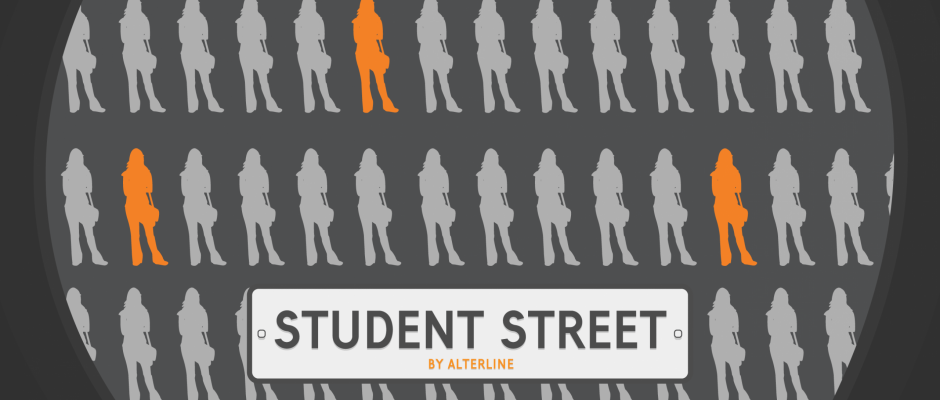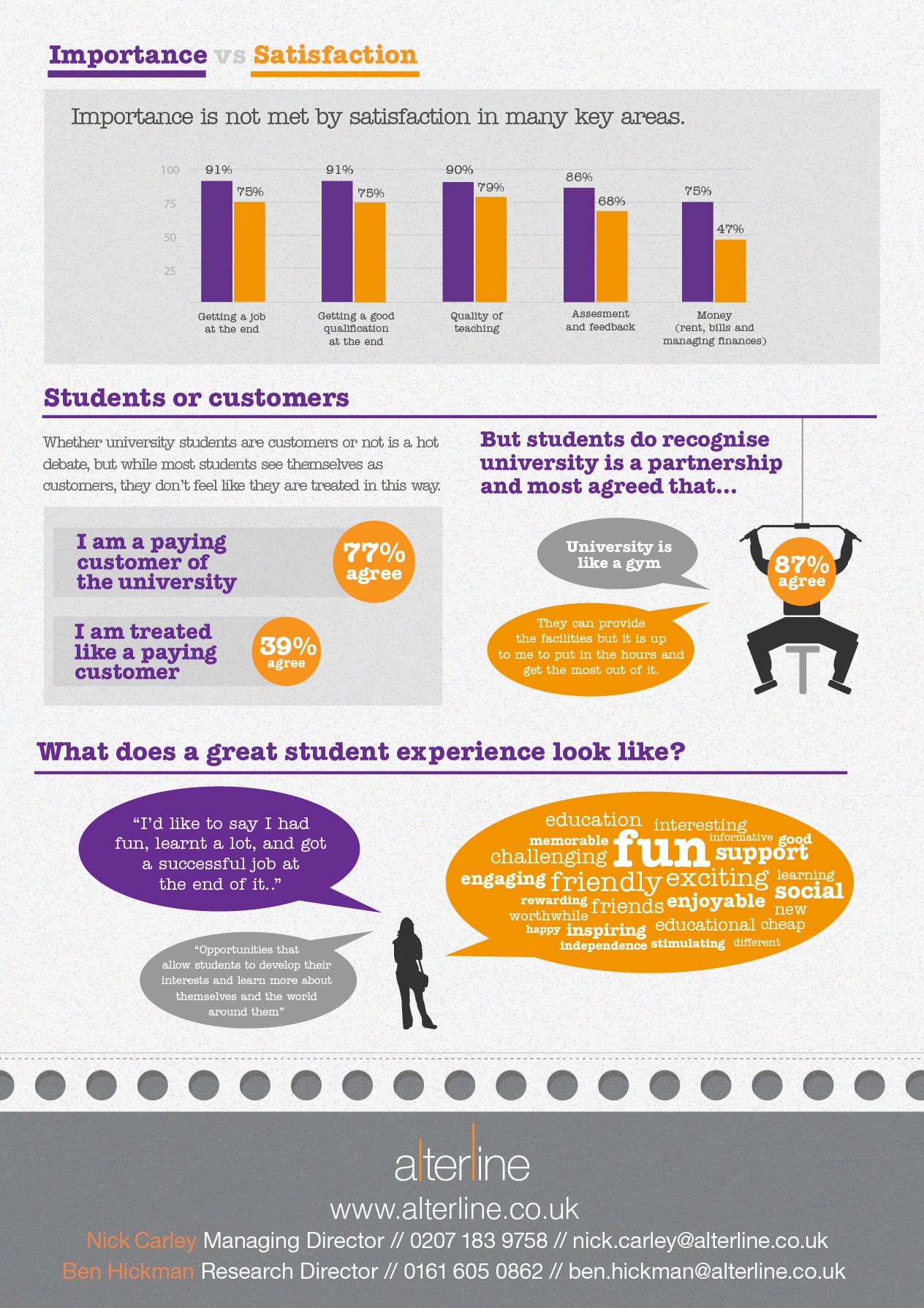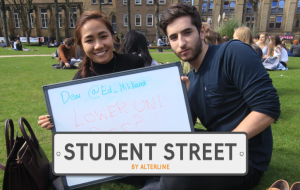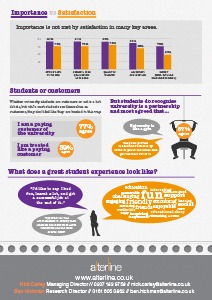
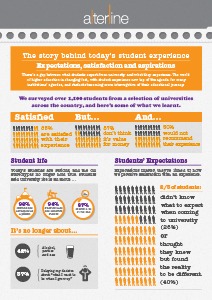 Student populations are becoming more diverse, fees look set to stay and learning channels and platforms are proliferating. In this fast-changing world it is more vital than ever to understand students’ experiences, lives and aspirations.
Student populations are becoming more diverse, fees look set to stay and learning channels and platforms are proliferating. In this fast-changing world it is more vital than ever to understand students’ experiences, lives and aspirations.
Recent national research by Alterline supports the now widely-held view that students are more serious than ever and old stereotypes no longer hold true. Students care a great deal about getting a good qualification and developing into an employable graduate; the nightlife of the 90s and early 00s, and the politics and activism of the 70s and 80s seem to be behind us.
In fact, most of today’s students feel they are paying customers of their university. This has big implications for the relationship between individuals and their institutions, especially when few students feel they are treated like paying customers, and many say they aren’t getting value for money.
There’s a definite gap between what students want and what they experience. In part, this might be about expectations; two-thirds of students don’t know what to expect from university or thought they knew what to expect but found the reality to be different. However, there’s also a gap between the experience some students get and the one they want; most noticeably in terms of their employability, feeling they’re succeeding on their course, the quality of teaching, and assessment and feedback.
Students recognise that university is a partnership, but often don’t feel that their university listens or responds to their feedback. Therefore, part of the answer to the expectations versus experience gap has to lie in a better, more granular understanding of students’ lives. We’ve uncovered some fascinating findings recently unpicking these issues with clients who want to drive real change in the sector; from an ethnographic study of the way students use library services at the University of Manchester, to audience segmentation with at the University of Birmingham Guild that gets beyond demographic stereotypes and looks at the attitudes and motivations of students.






